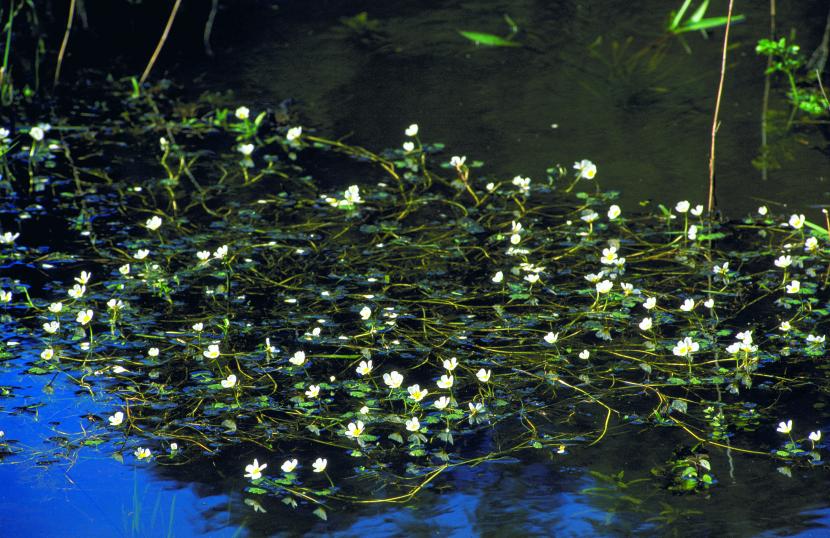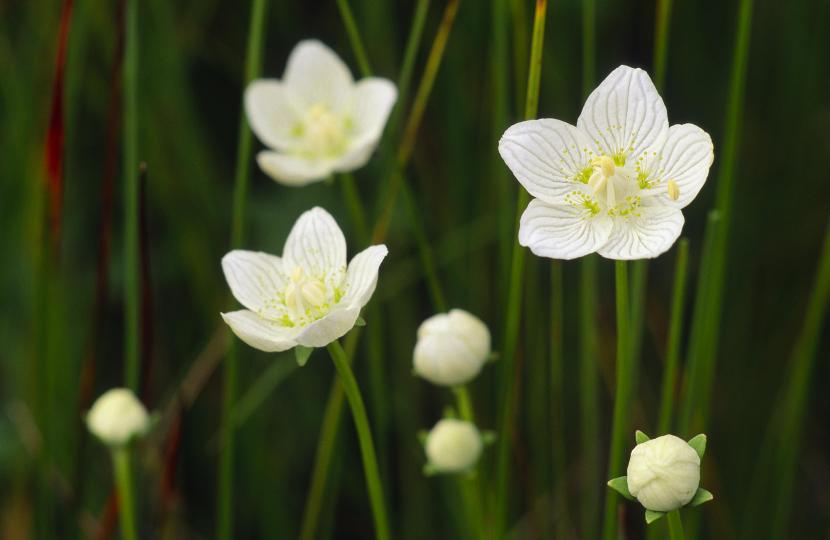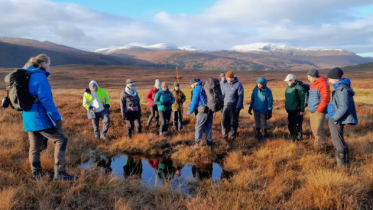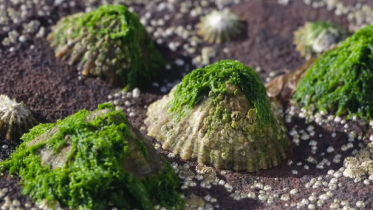
Loch, river and marsh plants
Scotland has abundant freshwater habitats – of all sorts of different qualities – ideal for flowering plants that enjoy the wet.
Which flowering plants grow in Scotland’s lochs, rivers and wetlands depends on the kind of freshwater available. Water may be deep or shallow, fast flowing or still, acidic or rich in nutrients.
Fast-flowing water
Flowering plants find it hard to gain a foothold in our fastest-flowing streams and rivers.
Where the current slows, particularly in Scotland’s south and east, water-crowfoot species forms floating mats of yellow-white flowers and trailing green stems.

©Lorne Gill
River shingles
This is a hazardous place for plants to grow, but seeds and fragments are constantly being washed up on river shingles.
In the hill country, arctic-alpine plants are washed down from the cliffs high above to grow at surprisingly low altitudes. Such species include alpine lady’s mantle and purple saxifrage.
In the lowlands, many of the plants growing on river shingles are garden escapes like lupin rather than native plants. Sometimes even tomatoes will grow here, from seed spread via wastewater.
Marsh plants
Unlike plants growing on peat bogs, the plants found in our marshes, mires and fens get nutrients from surrounding rocks and soil.
Where rock is acidic and low in nutrients, plants like bogbean, soft-rush and marsh cinquefoil do well.
Where marsh water has flowed over rock or through mineral-rich soils, the flora can include:
- black bog-rush – sometimes a sign that rarer plants might not be far away
- grass-of-Parnassus – a beautiful and delicate white flower that thrives where the water is rich in minerals and lime

©Lorne Gill, NatureScot.
Loch plantlife
Our deepest, steep-side lochs such as Loch Ness provide very little opportunity for flowering plants to take root. Shallow waters are a better place to look.
Small lochans in the high hills and on peatlands are naturally acidic and very low in nutrients. Flowering plants are few in number, but those that do well here have some remarkable ways of coping.
Bladderworts have scores of tiny traps, which they use to catch water fleas and other invertebrates. Larger lochs in the hills often have in their shallows communities of small plants with rosettes of leaves such water lobelia. These grow throughout the year and send a stem with a single flower up above the surface in summer.
Flowering plants do best in those lochs that are naturally richer in nutrients and which have clear waters, letting sunlight reach the depths. Plants like pondweeds (Potamogeton species) and water lilies are more abundant here. These can have both floating leaves on the surface and submerged leaves below.
Protection of freshwater plants
Discover how Scotland’s wild plants and fungi are protected.




